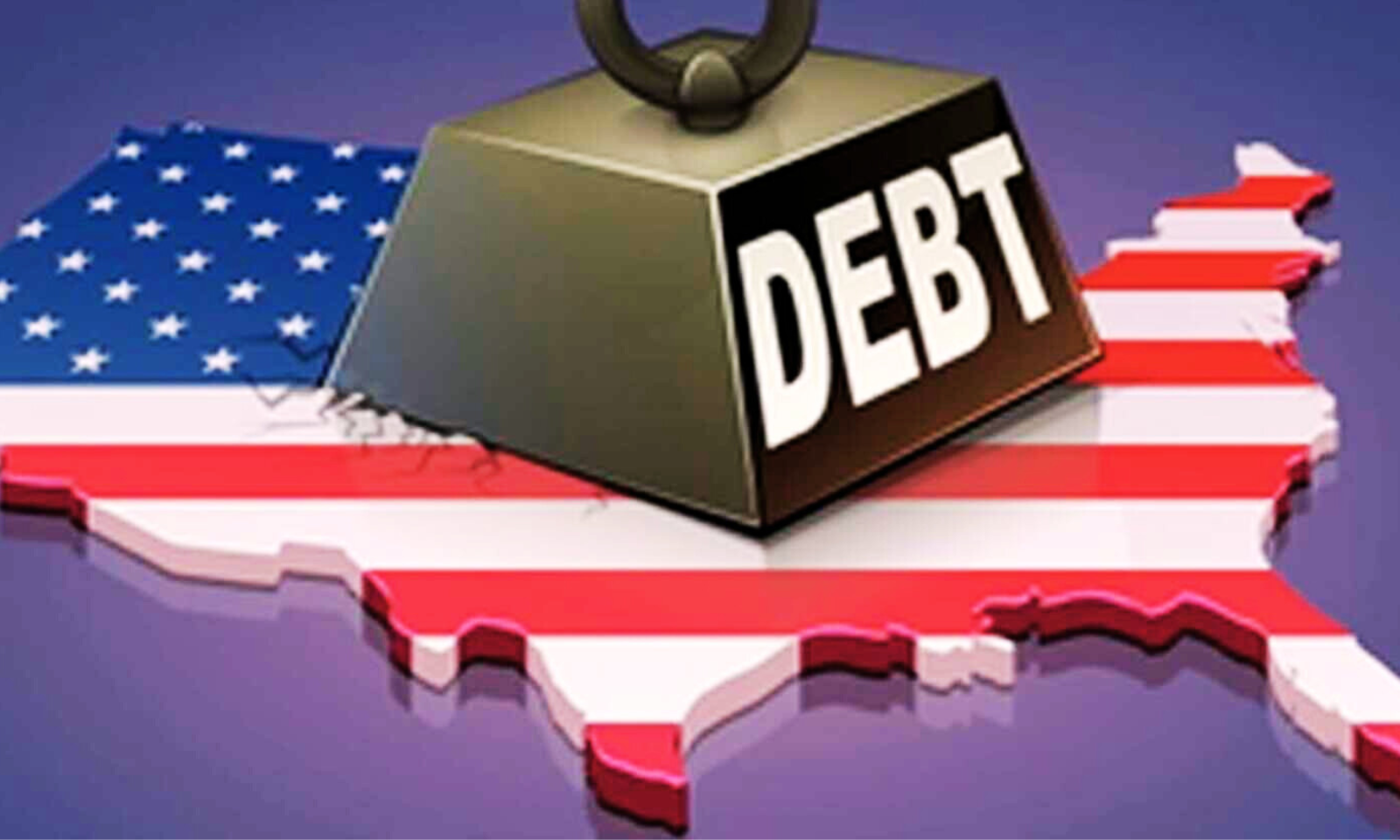US Debt Bomb: Economists Warn of Economic COLLAPSE! (Must Read) / Is America Broke? Economists Sound Alarm on Soaring Debt Levels / Will We Crash? Top Economists Reveal Dangers of US National Debt.
The United States of America is currently facing its largest public debt mountain ever, causing concern among economists. According to a Bank of America estimate, the federal debt balance reached $34 trillion this year, meaning that the government is expected to accumulate new debt every 100 days.
Why is that such a concern?
Les Rubin, a seasoned investor who has dubbed the US debt crisis one of the “greatest Ponzi schemes” in history, claims that the mountain of debt is a breeding ground for economic issues, including higher inflation, a worse standard of living, and, in the worst-case scenario, a destabilization of the larger financial system.
Selling US debt to investors—which include individuals, organizations, and foreign nations—is essential. However, when debt levels rise, there is concern about the US’s ability to fulfill its repayment obligations, and the economy suffers more the more individuals are reluctant to purchase US debt securities, according to Rubin.
The US Treasury issued $22 trillion in government bonds last year, but the lackluster demand at recent Treasury auctions indicates that investors may soon find it impossible to keep up with the massive influx of new bond issues. The last bond auctions, featuring 10- and 30-year bonds, elicited minimal enthusiasm from investors because to their perception of rising interest rates and increasing inflation.
In May, the US will reenter the market by offering $385 billion in brand-new bonds. “If we are unable to sell the debt, our economy will eventually become incapable of operating.” Government debt keeps it afloat. In an interview with Business Insider, Rubin stated, “We could not pay our bills if we could not literally sell our debt.” Since debt is intrinsically inflationary, if the government doesn’t reduce its borrowing, customers should expect rising prices.
This is due to the fact that debt stimulates the economy to some extent, which accelerates wage growth and hiring. Boston University economist Jay Zagorsky says that rising inflation is inevitable if the economy is currently at full employment. For for the whole past two years, inflation has been at least one percentage point higher than the Fed’s target of 2%. For the third consecutive month, prices increased 3.5% annually, with inflation coming in higher than anticipated.
A reduced spending amount
Zagorsky also noted that Americans may have a lower quality of life as a result of higher debt. This is due to the fact that when debt increases, the US government must pay more in interest to service the debt, which leaves less money available for other important programs like Social Security and other essential components of the social safety net.
Treasury records show that the US alone spent $429 billion on interest payments last year. That is 240% of the total amount the government has spent on housing, commerce, and transportation all together. “The federal government will soon find that funding for education and defense is not among its top priorities. It will focus on interest rather than housing, according to Zagorsky.
Financial repercussions
Rubin cautioned that because of the massive quantity of US debt owned by institutions globally, it would cause chaos in the financial markets if investors broadly lost faith in US government debt as a safe haven. In the worst-case situation, he anticipates a market meltdown if debt levels rise too much and people start to worry that the US would not be able to repay its obligations.
“The value of trillions of dollars that are currently on global balance sheets will either drastically decline or become completely worthless. There may be a reduction in interest payments. It would deal a fatal blow to the global economy and ultimately bring about anarchy. It can’t make it there,” he declared. Other than reducing its debt load, the government is unable to take significant action to prevent those issues from developing, according to Zagorsky and Rubin.
In theory, the government might create money to pay its debts, but if the money supply explodes, that would lead to hyperinflation. Strong economic growth can help make debt more manageable, but debt is currently expanding far more quickly than the economy. According to Fed data, the national debt balance increased 86% over the previous ten years, while GDP climbed by 63%.
When precisely the national debt will become a real issue for the US is a question that economists are unsure of. Rubin believes a catastrophe of some kind will emerge in the next ten years if the rate of borrowing doesn’t decrease. “It accelerates quickly after starting out gently. I don’t believe anything is going to happen soon. We have ten years or fewer, in my opinion, to solve this issue. That could be the most optimistic scenario, in my opinion,” Rubin remarked.

